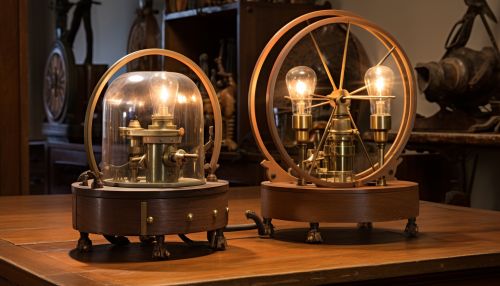Electrostatic generator
Introduction
An electrostatic generator is a device that produces static electricity, or electricity at rest. It operates on the principle of electrostatics: the branch of physics that deals with the phenomena and properties of stationary or slow-moving electric charges.


History
The first electrostatic generators were developed in the 17th century. These devices, known as friction machines, used a rotating glass globe that was rubbed by hand or by a piece of cloth to generate static electricity. The charge was then collected and stored in a Leyden jar, an early form of capacitor.
Types of Electrostatic Generators
There are several types of electrostatic generators, each with its own unique design and method of operation.
Friction Machines
The earliest electrostatic generators were friction machines. These devices used a rotating glass globe that was rubbed by hand or by a piece of cloth to generate static electricity.
Electrophorus
The electrophorus is a type of electrostatic generator that uses a disk of metal and a disk of insulating material to generate a charge. The metal disk is charged by induction, and the charge is then transferred to the insulating disk by contact.
Wimshurst Machine
The Wimshurst machine is a type of electrostatic generator that uses two large, counter-rotating disks to generate a high voltage. The disks are mounted on a common axis and are equipped with a number of metal sectors, which collect and store charge.
Van de Graaff Generator
The Van de Graaff generator is a type of electrostatic generator that uses a moving belt to carry charge to a large, spherical terminal. The generator can produce very high voltages, and is often used in particle physics experiments.
Operation
Electrostatic generators operate on the principle of electrostatic induction. This is a process in which a charged object induces a charge in a nearby object without direct contact. In an electrostatic generator, the charge is generated by friction or induction, and is then transferred to a storage device, such as a Leyden jar or a capacitor.
Applications
Electrostatic generators have a wide range of applications. They are used in scientific research, particularly in the field of particle physics, where they are used to accelerate particles to high speeds. They are also used in industry, for example in the production of photocopy machines and laser printers.
